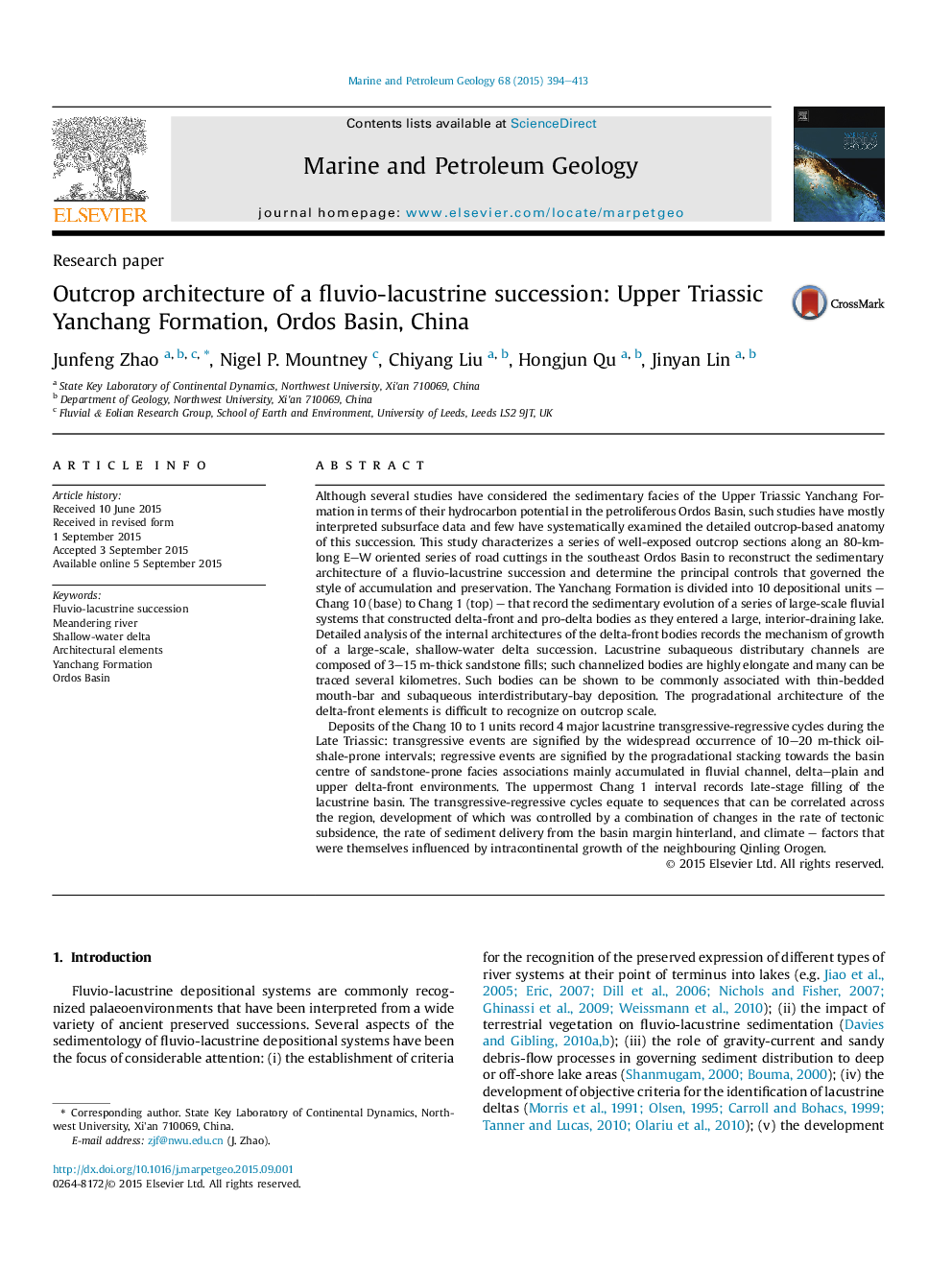| کد مقاله | کد نشریه | سال انتشار | مقاله انگلیسی | نسخه تمام متن |
|---|---|---|---|---|
| 6435103 | 1351611 | 2015 | 20 صفحه PDF | دانلود رایگان |
- Architectural characterization of a freshwater fluvio-lacustrine succession.
- 4 transgressive-regressive cycles relate to tectonic and climatic controls.
- Relates observed outcrop geology to subsurface geology known from core.
- Presents a new model for controls on the evolution of shallow-water lake deltas.
- Preferential preservation of subaqueous distributary channels on delta front.
Although several studies have considered the sedimentary facies of the Upper Triassic Yanchang Formation in terms of their hydrocarbon potential in the petroliferous Ordos Basin, such studies have mostly interpreted subsurface data and few have systematically examined the detailed outcrop-based anatomy of this succession. This study characterizes a series of well-exposed outcrop sections along an 80-km-long E-W oriented series of road cuttings in the southeast Ordos Basin to reconstruct the sedimentary architecture of a fluvio-lacustrine succession and determine the principal controls that governed the style of accumulation and preservation. The Yanchang Formation is divided into 10 depositional units - Chang 10 (base) to Chang 1 (top) - that record the sedimentary evolution of a series of large-scale fluvial systems that constructed delta-front and pro-delta bodies as they entered a large, interior-draining lake. Detailed analysis of the internal architectures of the delta-front bodies records the mechanism of growth of a large-scale, shallow-water delta succession. Lacustrine subaqueous distributary channels are composed of 3-15Â m-thick sandstone fills; such channelized bodies are highly elongate and many can be traced several kilometres. Such bodies can be shown to be commonly associated with thin-bedded mouth-bar and subaqueous interdistributary-bay deposition. The progradational architecture of the delta-front elements is difficult to recognize on outcrop scale.Deposits of the Chang 10 to 1 units record 4 major lacustrine transgressive-regressive cycles during the Late Triassic: transgressive events are signified by the widespread occurrence of 10-20Â m-thick oil-shale-prone intervals; regressive events are signified by the progradational stacking towards the basin centre of sandstone-prone facies associations mainly accumulated in fluvial channel, delta-plain and upper delta-front environments. The uppermost Chang 1 interval records late-stage filling of the lacustrine basin. The transgressive-regressive cycles equate to sequences that can be correlated across the region, development of which was controlled by a combination of changes in the rate of tectonic subsidence, the rate of sediment delivery from the basin margin hinterland, and climate - factors that were themselves influenced by intracontinental growth of the neighbouring Qinling Orogen.
Journal: Marine and Petroleum Geology - Volume 68, Part A, December 2015, Pages 394-413
